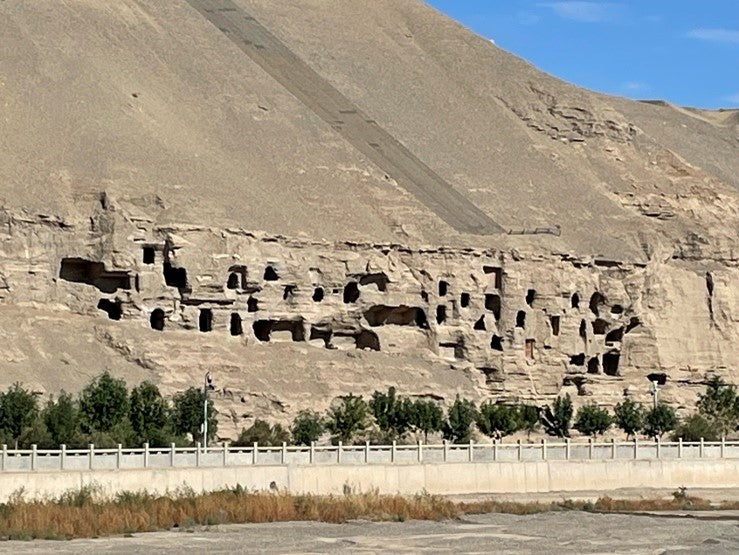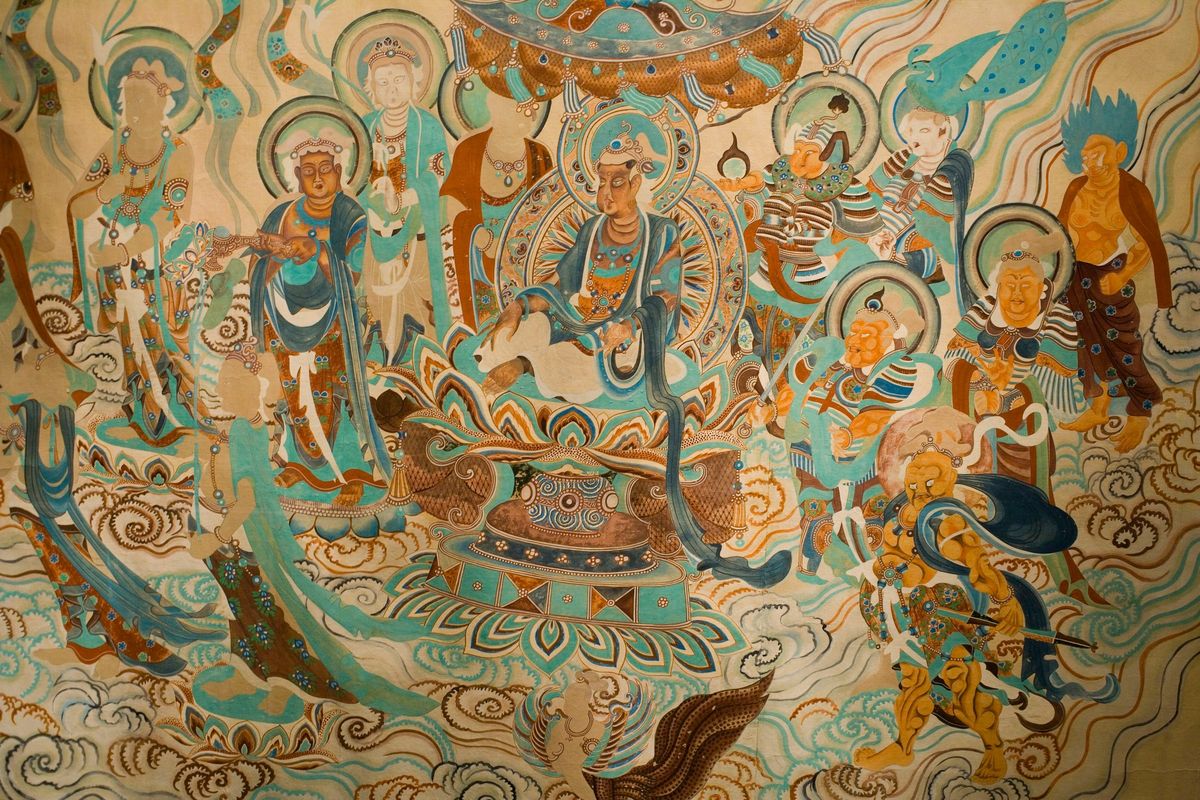
WHAT ARE THE SILK ROADS
Our visit to Gansu Provincial Museum focuses on the role of the Silk Roads in connecting East and West over a thousand years ago.
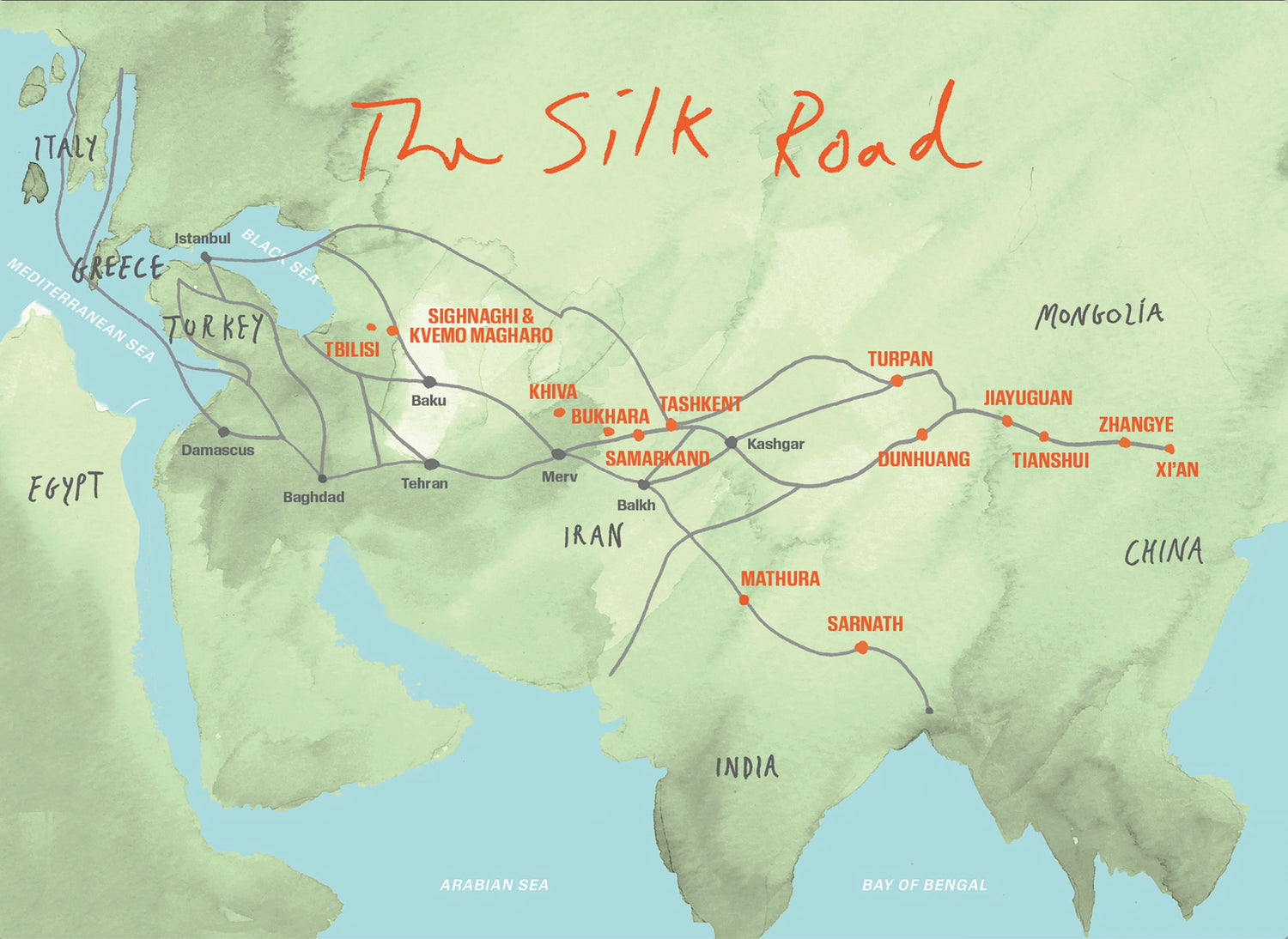
What were the Silk Roads?
The Silk Roads connected all parts of the known world in the first millennium (c 130BCE to 1453CE).
These routes crossed Asia, Europe, Africa and far beyond, mainly by land but also by sea. Merchants transported products of all kinds, most famously silk, from one community to another along the network. Over time, these human contacts went much deeper as travellers met local people and exchanged their customs, fashions, inventions, political ideas and religions.
In many ways the Silk Roads were the first ‘information superhighway’ and remind us that the idea of global connections or ‘globalisation’ is nothing new!
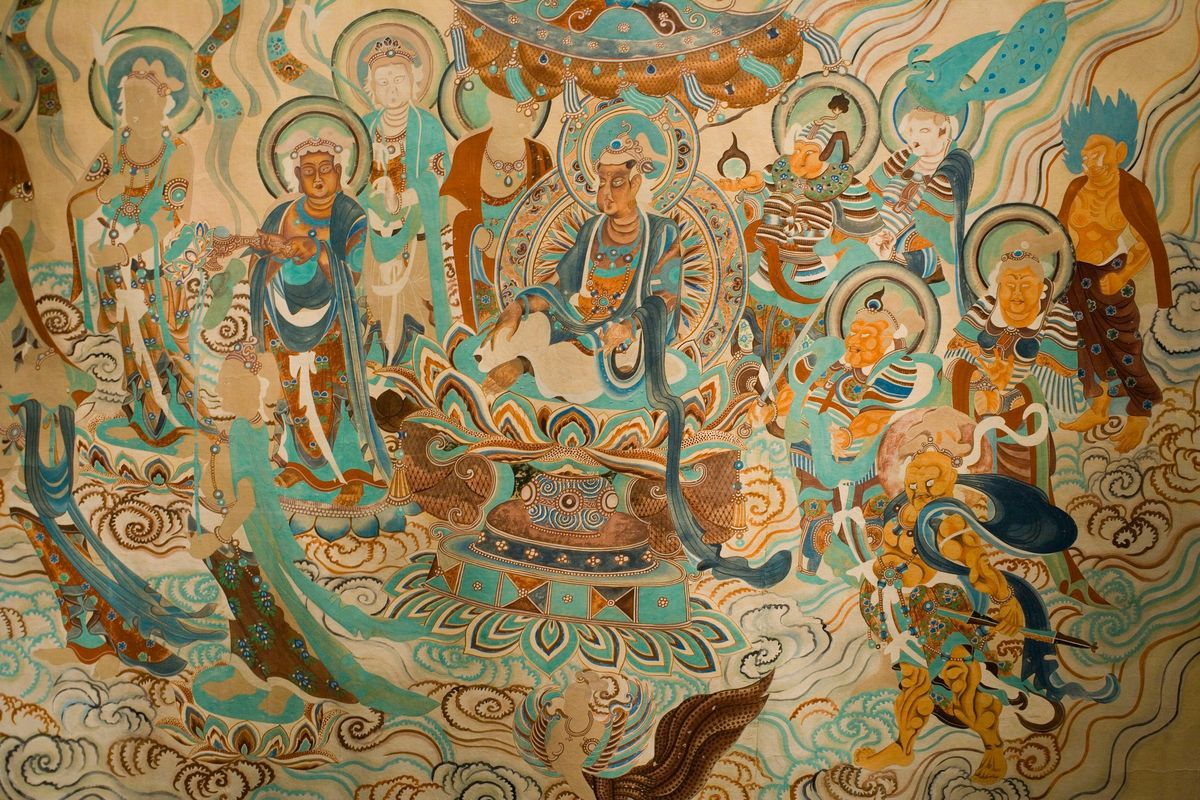
The art gallery in the desert?
Dunhuang began as a military outpost to protect the Chinese Empire from invasion over 2000 years ago. It rapidly grew into a busy oasis town where people from different cultures, and with different languages and religions, lived together. It became a central hub along the Silk Roads.
The Buddhist shrines (or grottoes) at nearby Mogao attracted worshippers and pilgrims from across Asia. The earliest grotto dates from around 300CE and, over the centuries, hundreds more were colourfully decorated with wall paintings and sculptures as memorials to family members. They reveal much about the daily lives and beliefs of the people living in and around the Dunhuang oasis.
The Mogao Grottoes, sometimes known as ‘the art gallery in the desert’, are a UNESCO World Heritage site, managed by the Dunhuang Academy, and open to the public.
Our weekend adventure includes a guided tour of the Mogao Grottoes, with the support of the Dunhuang Academy.
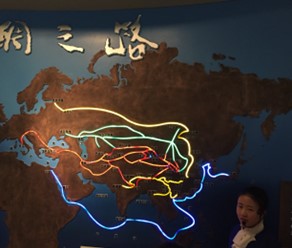
Silk Roads at the Gansu Provincial Museum
